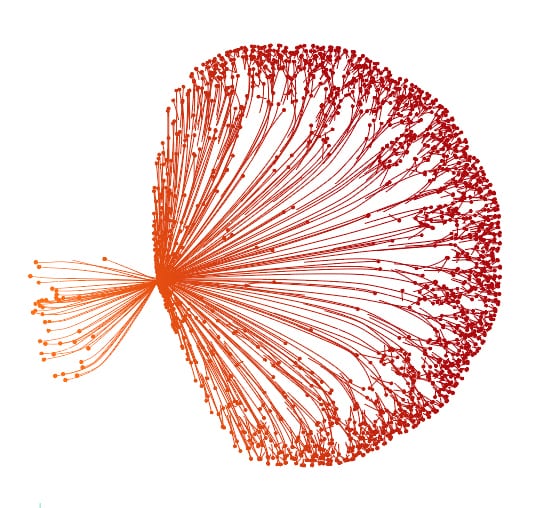Open Source History Foretells the Future of Pharma and Omics

The traditional model of siloed peer-reviewed journals and restricted research may give way as the pharmaceutical industry is transformed from relying on blockbusters and rare disease drugs for high volume to more personalized treatment for higher margin. For this model to work, the cost of research can’t continue to rise. Instead of keeping every compound proprietary and patented, the need to control costs may push pharma to a more open research and development model.
Right now, researchers all over the world are working diligently to match a molecule to a receptor on a cell or a virus. Some of that research will be academic and done in universities or educational institutions, some of it done in pharmaceutical company funded laboratories.
Meanwhile, NIH funding for this kind of lifesaving research is falling. Development costs of new drugs and biologics are rising and the chance of a new drug making it out of development to market is 1 in 1000. There needs to be a way to share costs and spread risk that doesn’t destroy profits.
Information sharing and computational models are seen as recipes for accelerating research and lowering risk/costs. These computational models for pharmaceutical research are at the heart of the so-called “omics” revolution. Some lessons from tech giants like Google, IBM, and Facebook may lead to a new kind of model for the pharmaceutical industry and the future of “omics.”
Collaborative Science and the Omics Revolution
Omics is a neologism that encompasses hundreds of fields of study using gene and protein sequencing as well as computer simulations to conduct biological research. Many of these fields, including systems pharmacology, comparative pharmacology, and network pharmacology, map genes and drug interactions across several systems, comparing the results. In the end, there is no room for siloing data to do this successfully and cost effectively.
Every pharmaceutical company is sitting on a compound database. Some companies would rather burn down one of their buildings than share that database without a ton of legal agreements. However, there is a major impetus with the risks and the costs of drug and biologic development to collaborate on this.
The move toward more openness is well underway in the pharmaceutical industry and among biological researchers. There are now databases of proteins and drugs among many others in the area of biological research. There are government efforts toward collaborative drug development. Researchers can now use platforms specifically designed for collaborative science or even participate in open research projects. These benefit the researcher by putting their work in front of a wider audience and the industry because costs are spread among more people.
How Open Source Evolved in Software
This change in the pharmaceutical industry is similar to how software development has evolved. There was a time when nearly every line of code was kept secret, copyrighted, and carefully litigated. Innovation in the computer hardware industry was moving at the rate of Moore’s Law. Meanwhile, R&D in the computer software industry was less fast-paced. Then came the Internet.
A new model of software development emerged that promoted sharing and developing software with a collaborative model, then distributing the works and source code – the very DNA of software – for free! But this did not kill the software industry, it accelerated it. Companies from the likes of IBM to Google to Lucidworks began participating in key engine (i.e Solr) and platform development (i.e. Spark) in open source communities, then productizing and augmenting that software with additional features or services required for corporate customers.
Like omics and bioinformatics, early open source efforts and even the world wide web and Internet itself – were oversold. Initial enthusiasm turned to skepticism and a pullback occurred. This happened, as usual, right before the payoff. The companies that weathered the store (i.e. Amazon) were able to grow to new heights.
Open source software, rather than destroying the software industry with free software that anyone could download and use, reinvigorated and accelerated it. There is virtually no business or consumer software product that you can buy today that doesn’t contain open source software or software libraries.
How This Might Play Out
As the industry begins to develop collaborative and open research models, this will create new challenges in commercialization. In some areas, the model will be straightforward:
- Generics using open databases and emphasizing cost controls and delivery models.
- Biosimilars using research and similar drugs and biologics to reduce side effects.
- Delivery systems and therapies moving beyond the simple pill model to compose therapies that ensure patient compliance and better outcomes.
- Repurposing using existing compounds in new and novel ways to treat other ailments.
- Combination therapies combining multiple compounds and biologics to produce a combined effect. This is similar to the antiretroviral treatments pioneered for HIV.
Other models will use bodies of research to develop truly innovative cures and even blockbuster drugs. As this revolution in data science and genomic research moves forward along with the social change of how research is shared, we can expect a compounding effect similar to what has happened in the tech industry.
Ending Data Silos
Pharmaceutical companies aren’t going to give up all of their competitive advantages, just like software companies who participate in open source development generally keep something back. However, through sharing and better data systems technologies, there will be ever increasing amounts of sharing of both datasets and platforms.
Learn more:
LEARN MORE
Contact us today to learn how Lucidworks can help your team create powerful search and discovery applications for your customers and employees.